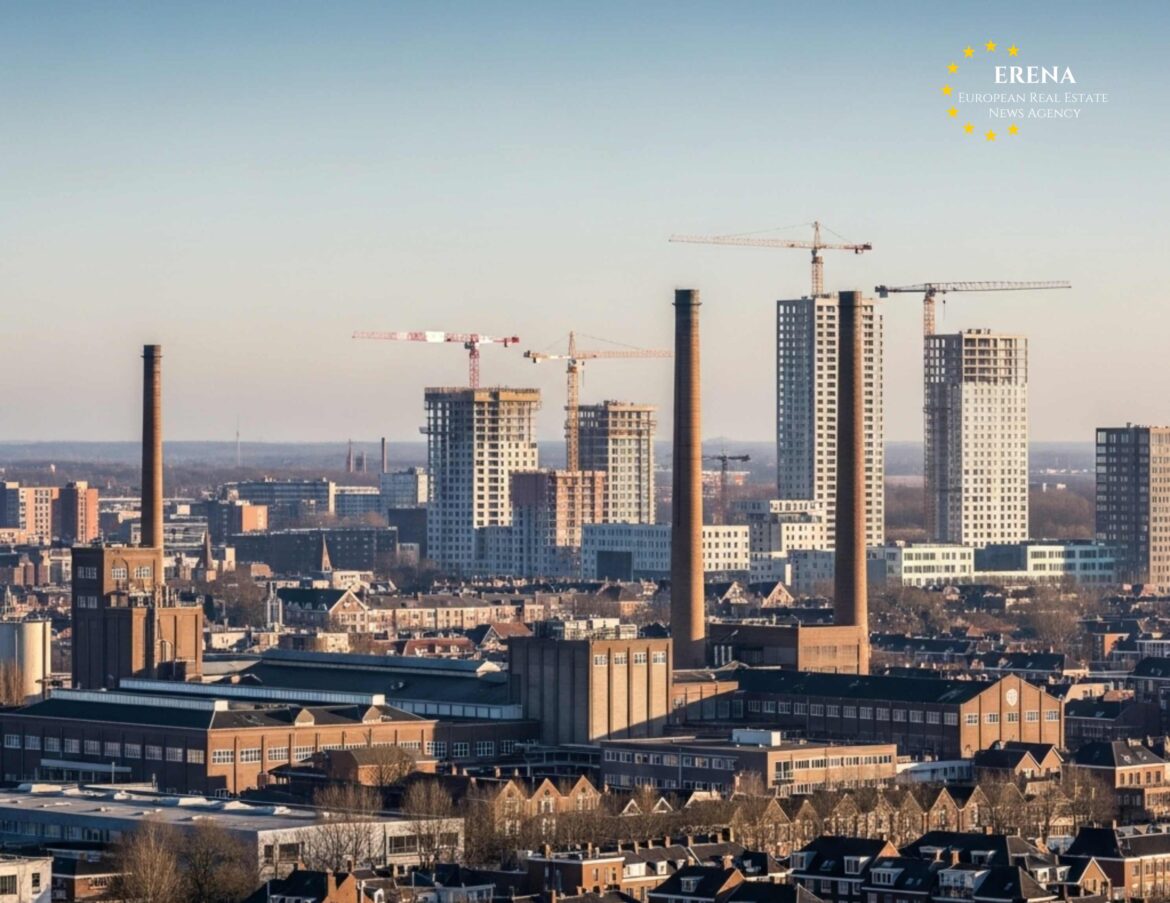Middelburg, the capital of Zeeland province in the Netherlands, has witnessed a notable transformation in recent years, driven largely by the expansion of industrial and logistical activities. Once known primarily as a historic and administrative center, the city is now emerging as a hub for modern logistics and light manufacturing. This shift is reshaping not only Middelburg’s industrial profile but also its residential and commercial real estate markets.
Expansion of the Industrial Sector
With its strategic location near major seaports and key transport routes, Middelburg has become increasingly attractive to companies looking to establish distribution centers, warehouses, and light manufacturing facilities. New industrial parks are being developed, older storage areas are being modernized, and adjacent land is rapidly being prepared for new development.
Several factors contribute to this momentum: the availability of development-ready land, solid transportation infrastructure, and growing investment from both domestic and international firms. Industrial activity in Middelburg is gaining momentum, particularly in sectors like assembly, packaging, green logistics, and sustainable energy.
Rising Residential Property Prices
The growth of the industrial sector has triggered a notable rise in property prices. Over the past two years, average home prices in Middelburg have increased by approximately 10–15%. In 2023, the average price per square meter was around €3,280, while by 2025 it had surpassed €3,400. This rise is influenced by both nationwide trends and localized demand driven by an influx of workers.
With the arrival of engineers, technicians, and logistics professionals from other parts of the Netherlands and abroad, demand for both rental and for-sale housing has surged. Affordable apartments, terraced houses, and small family homes near industrial zones are especially sought after.
Rental Market Pressure and Limited Supply
The rental market in Middelburg has experienced similar pressure. Average rents have risen by 8–10% since 2023, particularly in areas close to transport hubs and industrial districts. The high demand has led to the emergence of new housing models such as micro-apartments, co-living spaces, and temporary housing for rotating workforces.
However, supply is struggling to keep pace with demand. Many tenants face limited options and increasing rents, especially those seeking mid-range or short-term accommodation.
Commercial and Logistics Property Boom
Perhaps the most dynamic real estate growth is happening in the commercial and logistics sector. The outskirts of Middelburg are seeing a wave of new construction, including state-of-the-art distribution centers, energy-efficient warehouses, and hybrid industrial-office buildings.
Rental prices for these assets have increased by 12–15% over the last two years, with some projects offering units from 2,000 to 10,000 square meters. Developers focus on features such as smart automation, sustainable design, and strategic access to highways and rail connections to meet the demands of modern tenants.
Urban Policy and Social Infrastructure Challenges
As the industrial economy expands, the city faces growing pressure on its social infrastructure. Local authorities are working to ensure adequate services for the growing population, including schools, childcare centers, healthcare facilities, and public transportation.
Urban planners are looking to integrate new workers into established neighborhoods, expand affordable housing options, and invest in public amenities. However, these initiatives take time and funding to implement effectively.
Shift in Real Estate Demand Structure
Middelburg’s property market is becoming increasingly polarized. On one hand, there is strong demand for affordable, functional housing suited for new industrial workers. On the other, a stable market remains for premium historic properties popular among retirees and high-income professionals.
This dual-track market dynamic is creating diverging price patterns—moderate increases in luxury properties and sharp jumps in affordable segments.
Investment Trends and Developer Activity
Middelburg has caught the attention of private and institutional investors alike. Development firms are actively acquiring land near transport nodes and repurposing outdated industrial facilities into modern logistics hubs, hybrid commercial projects, and business campuses.
These efforts reflect a growing interest in maximizing land use through flexible and multi-purpose developments. Energy efficiency, adaptability, and location convenience are among the top criteria for new tenants and investors.
Outlook for 2026 and Beyond
With increasing interest in regional logistics and ongoing infrastructure upgrades, Middelburg is poised for continued transformation. Looking ahead, several trends are expected to shape the market:
- Residential property prices may continue to rise by 5–8% annually.
- New industrial developments are likely to spread within a 10-kilometer radius of the city center.
- Modular housing and small-scale residential developments for workers will grow in importance.
- Institutional investment in workforce rental housing is expected to intensify.
However, competition for land between industrial and residential uses may become more intense, especially within urban boundaries.
Conclusion
Industrial growth in Middelburg is profoundly impacting its real estate landscape. The city is evolving from a regional administrative hub into a strategic logistics and light-industrial center, attracting capital, labor, and new residents. While this presents significant opportunities, it also introduces challenges—such as housing affordability, infrastructure capacity, and urban sustainability.
To ensure long-term resilience, Middelburg must:
- Balance economic development with community needs.
- Expand affordable housing options.
- Invest in modern social infrastructure.
- Manage land allocation carefully and transparently.
If the city succeeds in addressing these priorities, it can serve as a model for sustainable urban-industrial integration—demonstrating how industrial expansion, when guided wisely, can become a catalyst for holistic city growth.

